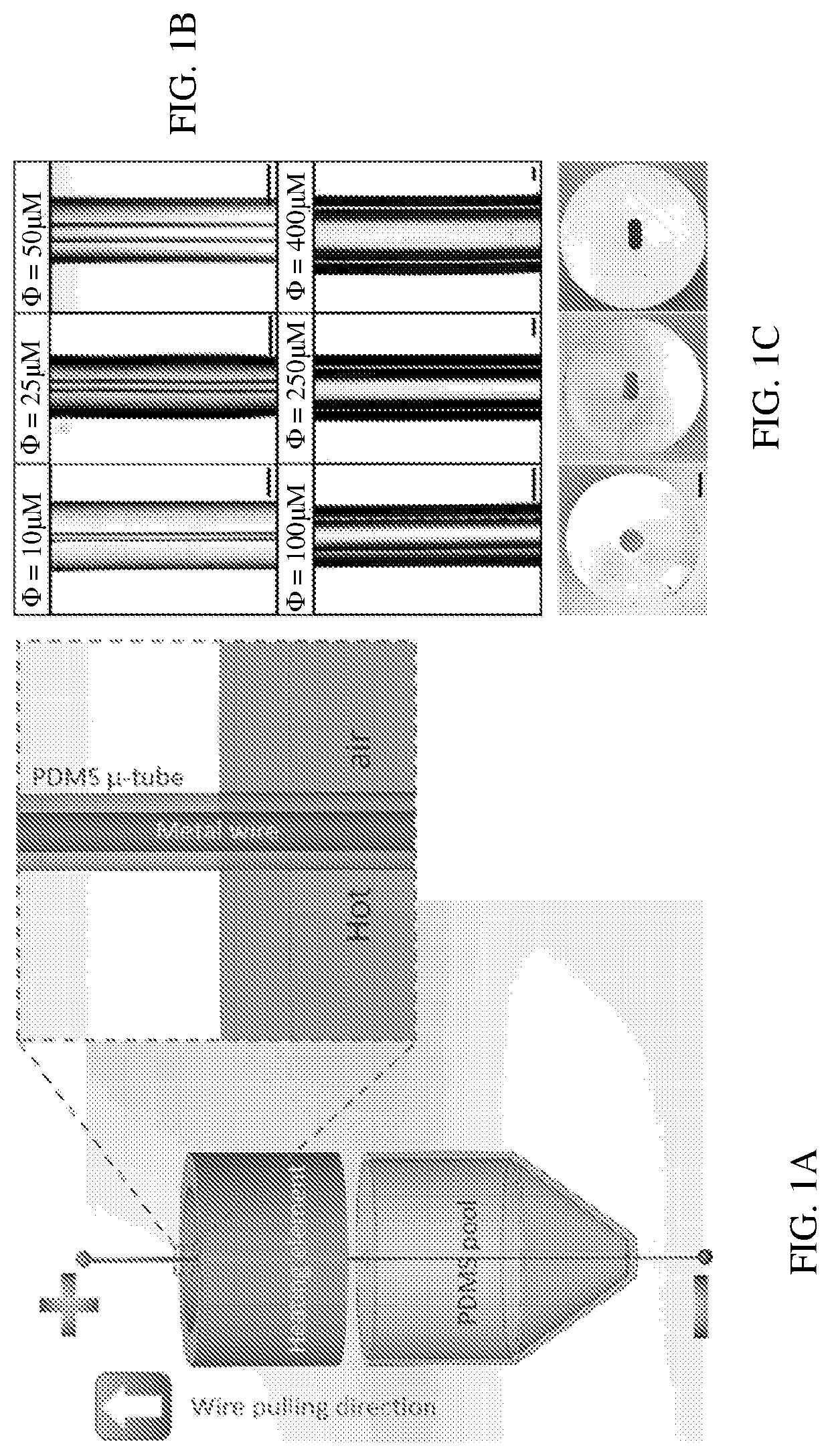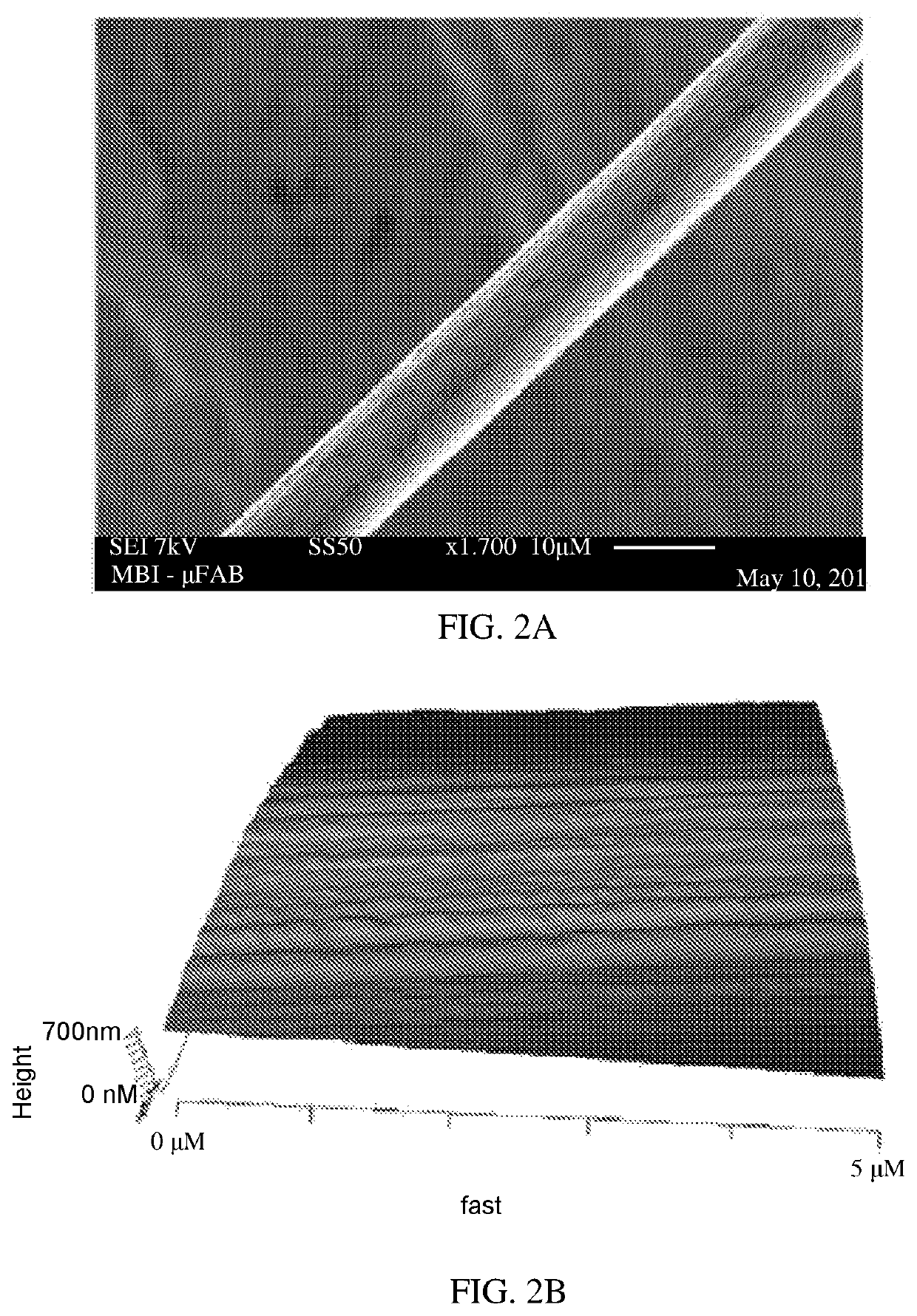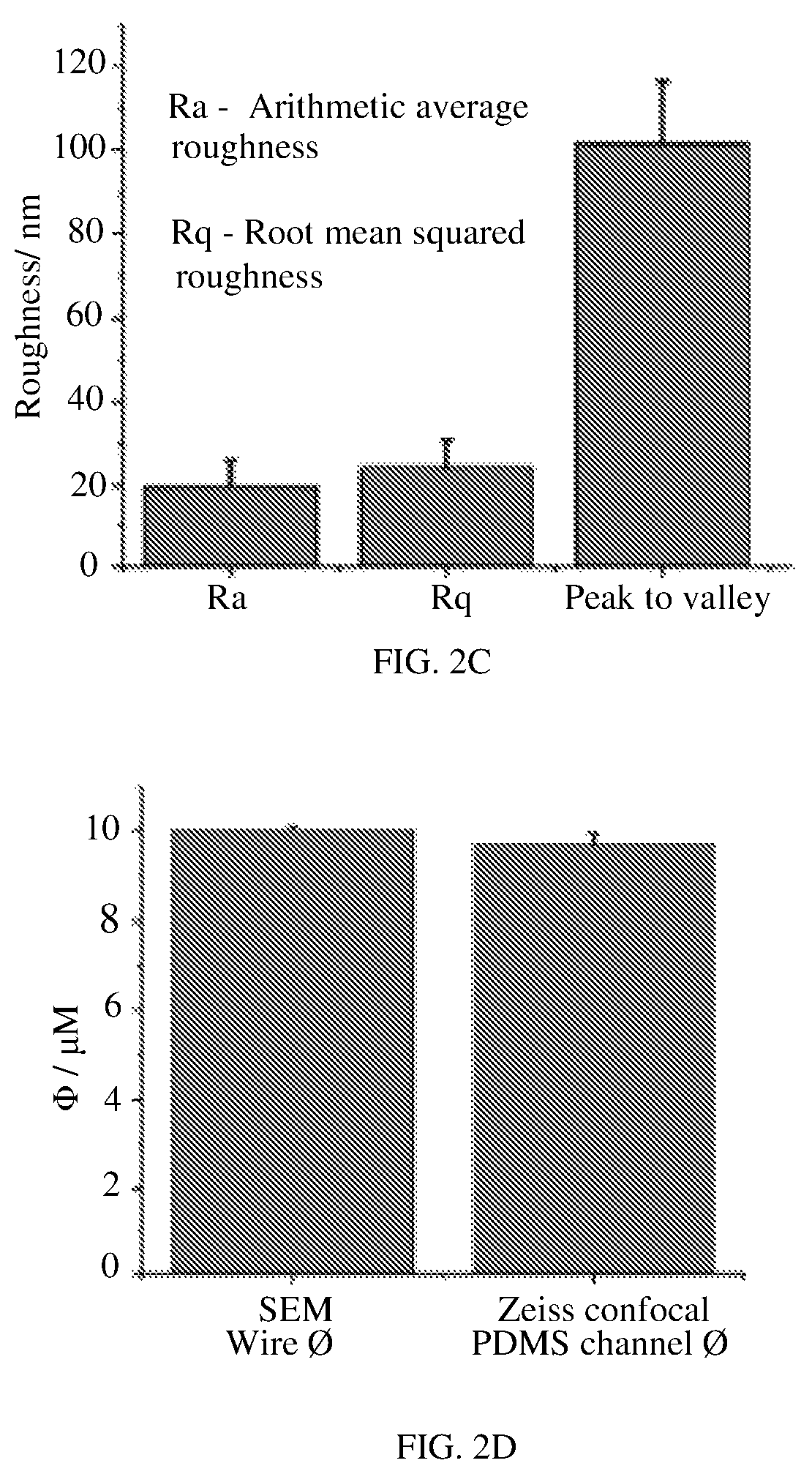Versatile, flexible and biocompatible elastomeric microtubes
a biocompatible, flexible technology, applied in the field of elastomeric microtubes, can solve the problems of difficult to form complex three-dimensional (3d) microstructures, limit the geometry of microfluidic channels to rectangular cross-sections, etc., and achieve the effects of fast patterning of microchannels, reduced costs, and low cos
- Summary
- Abstract
- Description
- Claims
- Application Information
AI Technical Summary
Benefits of technology
Problems solved by technology
Method used
Image
Examples
example 1
Making Silicone Elastomer Based Microtube
[0069]The method involves immersing a metal wire (normally made of copper or tungsten) vertically into a freshly mixed PDMS (mixture of Sylgard 184 silicone elastomer base and Sylgard 184 silicone elastomer curing agent, 10:1 by weight) or a UV sensitive polymer (MYpolymer, MY-134-XP8, MY Polymers Ltd.) pool, as depicted in FIG. 1A. To fabricate PDMS microtubes, the metal wire was then connected to a variable power supply and heated up to ˜100° C. by electricity for 3-5 minutes. This generates a heat field close to the metal wire that initiate PDMS curing. A thin layer of cured PDMS forms on the surface of the wire and its thickness depends on the heating period. The metal wire was then pulled out of the PDMS pool at a speed of ca. 200 μm / s vertically above the fluid level by a linear stepping motor, and a second thin layer of viscous uncured PDMS will form around the wire, which is further cured by hot air at ca. 90-100° C. in a cylindrical ...
example 2
ive Polymer Based Microtube
[0072]To fabricate MYpolymer microtubes, the metal wire was pulled out of a pre-cured UV-curable MYpolymer pool into an Ar chamber. The thin MYpolymer layer coated around the metal wire was then cured on-site under a UV mercury lamp (350-460 nm, Newport Oriel Product Line System) operating at 300 W with an illumination power of 0.2 W / cm2. The MYpolymer coated metal wire was then transferred into a pure ethanol bath and sonicated for 30 minutes to remove the diffusing photoinitiator. The MYpolymer microtubes (FIG. 4) can then detach from the metal wires after the ethanol treatment, followed by baking in a 100° C. oven for one hour to remove any ethanol remnant.
[0073]The mechanical properties of the PDMS microtubes are characterized and listed below when compared with commercially available silicone tubing:
[0074]
PropertyUnitSiliconePDMS microtubesTensile strengthMPa6.8-8.7 5-10Elongation at break%570-795200-400HardnessShoreA: 50-80A: 43Brittle temperature° C...
example 3
otubes as Basic Microfluidic Components (Pipe, Valve and Pump)
[0077]The PDMS cured under our experimental condition normally has a Young's modulus of 1.5-2.0 MPa, allowing significant deflections with moderate actuation forces. This property then provides a unique solution for the valving and actuation for microtube-based microfluidic devices. Flows in these microtubes can be easily controlled merely via mechanical compression and release on them by a commercially available mechanical pincher on the pipeline (FIGS. 6A and 6B). Microtubes with circular cross-section were used for the implementation of valving due to the fact that the rounded channels close from edges to center by external compressional force and thus seal completely at lower pressure in comparison to rectangular and square channels.11 The control of flows with an on-off valve is demonstrated in FIG. 6A. The mechanical pinch point that crosses over the microtubes is normally 0.5 mm in the width and for a microtube wit...
PUM
| Property | Measurement | Unit |
|---|---|---|
| outer diameter | aaaaa | aaaaa |
| inner diameter | aaaaa | aaaaa |
| inner diameter | aaaaa | aaaaa |
Abstract
Description
Claims
Application Information
 Login to View More
Login to View More - R&D
- Intellectual Property
- Life Sciences
- Materials
- Tech Scout
- Unparalleled Data Quality
- Higher Quality Content
- 60% Fewer Hallucinations
Browse by: Latest US Patents, China's latest patents, Technical Efficacy Thesaurus, Application Domain, Technology Topic, Popular Technical Reports.
© 2025 PatSnap. All rights reserved.Legal|Privacy policy|Modern Slavery Act Transparency Statement|Sitemap|About US| Contact US: help@patsnap.com



